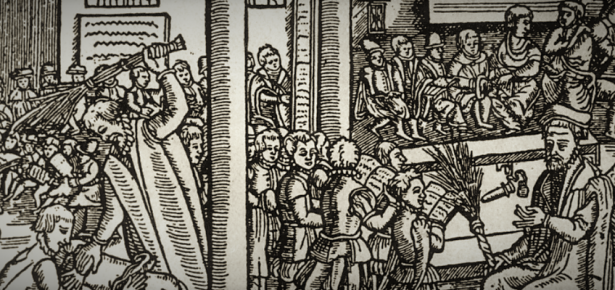
A few years ago, I saw my daughter perform in her school musical, Singing in the Rain. I had performed in many such shows in my youth, and watching her I vividly remembered my own experiences singing, dancing, and acting in roles that were meant for adults, performances that sometimes went well (I’m quite proud of my Mabel) and sometimes went poorly (I was a terrible Fantine). My daughter’s school performance was memorable for a different set of reasons. Obviously, I did not assess these children in the same way as I would adult performers or the way I judged myself in my youth. Instead, I viewed the children’s singing and dancing and acting through the rosy lens of parental devotion, even when an over-exuberant Don almost tap danced off the stage.
Watching my daughter’s school performance of Singing in the Rain brought my personal and intellectual lives together; I have a longstanding academic interest in children’s performance, for I have written extensively about Henry Purcell’s opera, Dido and Aeneas, performed by girls at Josias Priest’s school in Chelsea, ca. 1688. I could not help but wonder if the performance I witnessed in Upstate New York hinted at the chaotic and charming energy of the girls at Priest’s school. Indeed, like many performance-studies scholars, I would posit that such a fantastical query is not an idle one, for the performed past doesn’t entirely disappear; when children act a scene from a script, realize a choreography, or sing from a score, they serve as conduits between past and present, for these sources, these documents of performance, tell their bodies what to do, what sounds to make, revivifying and recapitulating what others have done before. From a more traditional historical perspective, I had always suspected that Dido and Aeneas was part of a much larger tradition of pedagogical performance, a suspicion shared by many of my musicology colleagues. Conversations with them persuaded me that the topic required further investigation, so off to the archives I went in search of evidence.
This proved to be a difficult task, for, as I collected materials for my study, I kept finding gaps that pointed toward the things I might never know – missing musical notation, absent choreographies, the embodied physicality of performing children from centuries past. To fill in these gaps, I broadened the scope of my archive; naturally the operas, masques, and musical plays performed at early modern schools are key to our understanding of the role of performance in pedagogy, but so are descriptions of school performances in letters and documents written by pupils’ family members, school records from local and national archives that mention performance activities, and newspaper advertisements regarding performance-based curricula. I also collected printed and manuscript music connected with personnel who worked at schools, for musical-theatrical performances before an audience were only the most public manifestation of a larger pedagogical practice. I even analyzed plays performed on the London stage that feature scenes with school-based singing, dancing, and acting to understand the place pedagogical performance occupied in the cultural imagination.
I also thought in terms of performance to fill in the gaps: when we only consider what is on the page, we risk erasing the actual bodies and voices of the early modern children who performed, causing us to misunderstand and misinterpret the past. I animated these sources by analyzing the implications of performance, collecting information about how early modern children and their teachers sang, danced, and acted, and considering how these interactions might have disrupted or altered meaning. What if a boy’s voice cracked? What if a student’s voice teacher played her lover? What if a young person took a role (a witch, a siren) that undermined notions of appropriate gendered behaviour?
Although I am a musicologist by training, I purposely wrote Music, Dance, and Drama in Early Modern English Schools with a broad readership in mind. I hope people from a variety of disciplines will find it useful for understanding how the performing arts inculcated girls and boys into gendered ways of being; how children’s performance sometimes disrupted the script and score; and where we might locate the ghosts of pedagogical performances past in performances present.
Latest Comments
Have your say!